
FM 21-150 COMBATIVES 1992
.pdf
FM 21-150
b. Knife Defense Drills. Knife defense drills are used to familiarize soldiers with defense movement techniques for various angles of attack. For training, the soldiers should be paired off; one partner is named as the attacker and one is the defender. It is important that the attacker make his attack realistic in terms of distance and angling during training. His strikes must be accurate in hitting the defender at the intended target if the defender does not defend himself or move off the line of attack. For safety, the attacks are delivered first at one-quarter and one-half speed, and then at three-quarter speed as the defender becomes more skilled. Variations can be added by changing grips, stances, and attacks.
(1) No. 1 angle of defense—heck and lift. The attacker delivers a slash along the No. 1 angle of attack. The defender meets and checks the movement with his left forearm bone, striking the inside forearm of the attacker (Figure 5-13, Step 1).
The defender’s right hand immediately follows behind the strike to lift, redirect, and take control of the attacker’s knife arm (Figure 5-13, Step 2).
The defender brings the attacking arm around to his right side where he can use an arm bar, wrist lock, and so forth, to disarm the attacker (Figure 5-13, Step 3).
He will have better control by keeping the knife hand as close to his body as possible (Figure 5-13, Step 4).
5-18
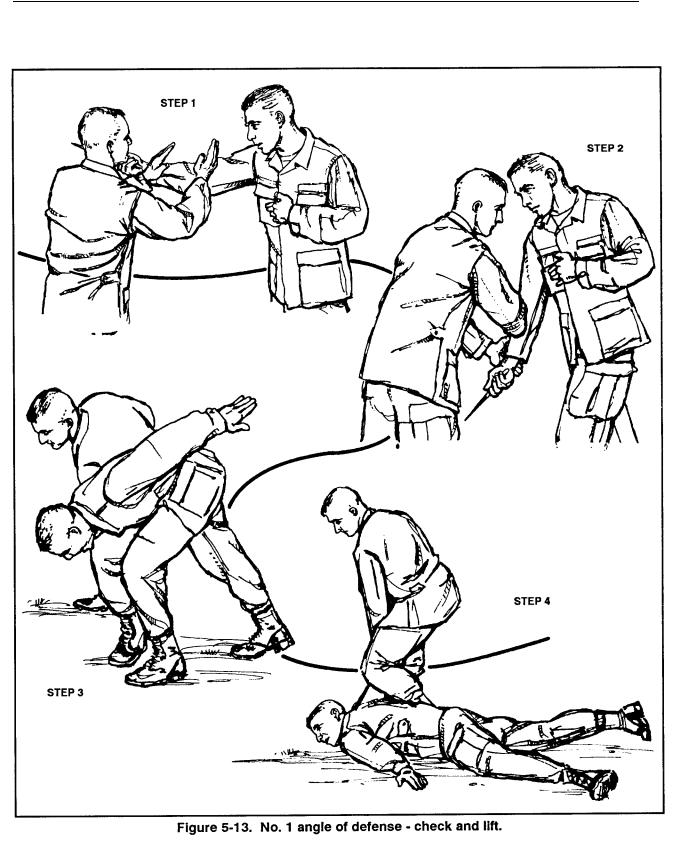
FM 21-150
5-19

FM 21-150
(2) No. 2 angle of defense—check and ride. The attacker slashes with a No. 2 angle of attack. The defender meets the attacking arm with a strike from both forearms against the outside forearm, his bone against the attacker’s muscle tissue (Figure 5-14, Step 1).
The strike checks the forward momentum of the attacking arm. The defender’s right hand is then used to ride the attacking arm clear of his body (Figure 5-14, Step 2).
He redirects the attacker’s energy with strength starting from the right elbow (Figure 5-14, Step 3).
5-20
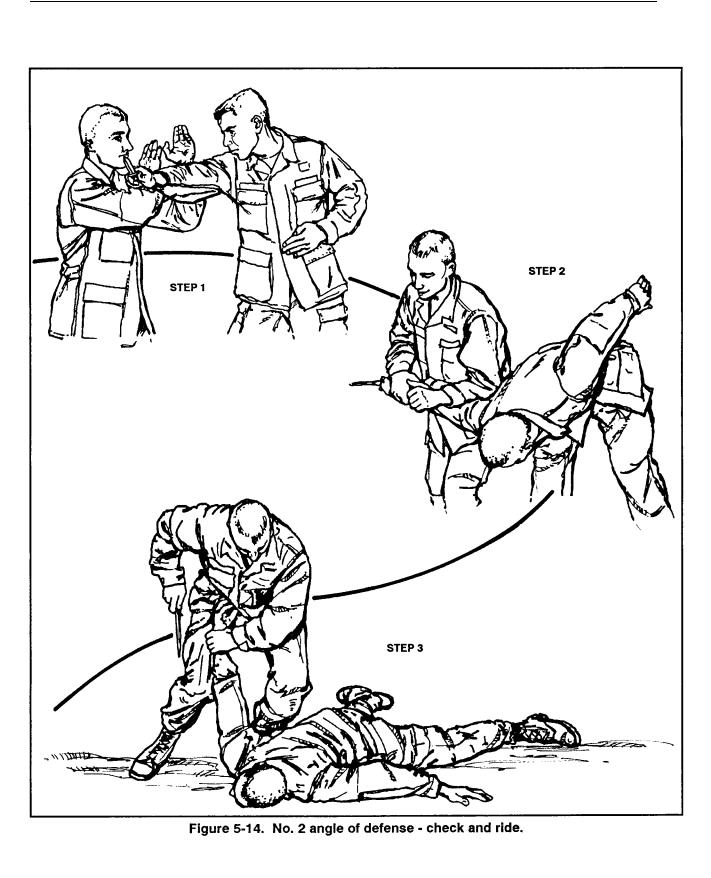
FM 21-150
5-21

FM 21-150
(3) No. 3 angle of defense—check and lift. The attacker delivers a horizontal slash to the defender’s ribs, kidneys, or hip on the left side (Figure 5-15, Step 1). The defender meets and checks the attacking arm on the left side of his body with a downward circular motion across the front of his own body.
At the same time, he moves his body off the line of attack. He should meet the attacker’s forearm with a strike forceful enough to check its momentum (Figure 5-15, Step 2). The defender then rides the energy of the attacking arm by wiping downward along the outside of his own left forearm with his right hand.
He then redirects the knife hand around to his right side where he can control or disarm the weapon (Figure 5-15, Step 3).
5-22
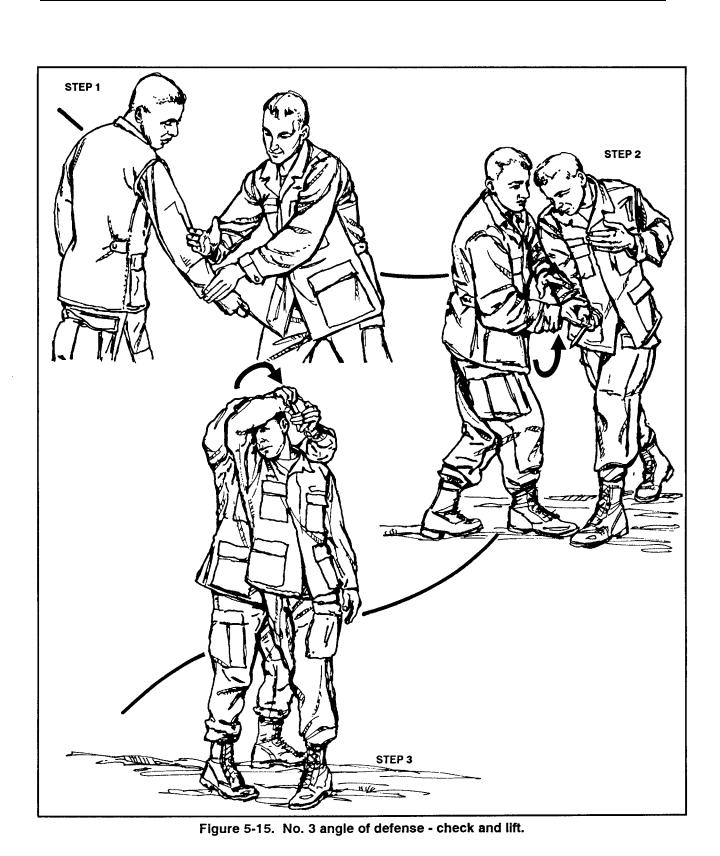
FM 21-150
5-23

FM 21-150
(4) No. 4 angle of defense—check. The attacker slashes the defender with a backhand slashing motion to the right side at the ribs, kidneys, or hips. The defender moves his right arm in a downward circular motion and strikes the attacking arm on the outside of the body (Figure 5-16, Step 1).
At the same time, he moves off the line of attack (Figure 5-16, Step 2). The strike must be forceful enough to check the attack.
The left arm is held in a higher guard position to protect from a redirected attack or to assist in checking (Figure 5-16, Step 3).
The defender moves his body to a position where he can choose a proper disarming maneuver (Figure 5-16, Step 4).
5-24
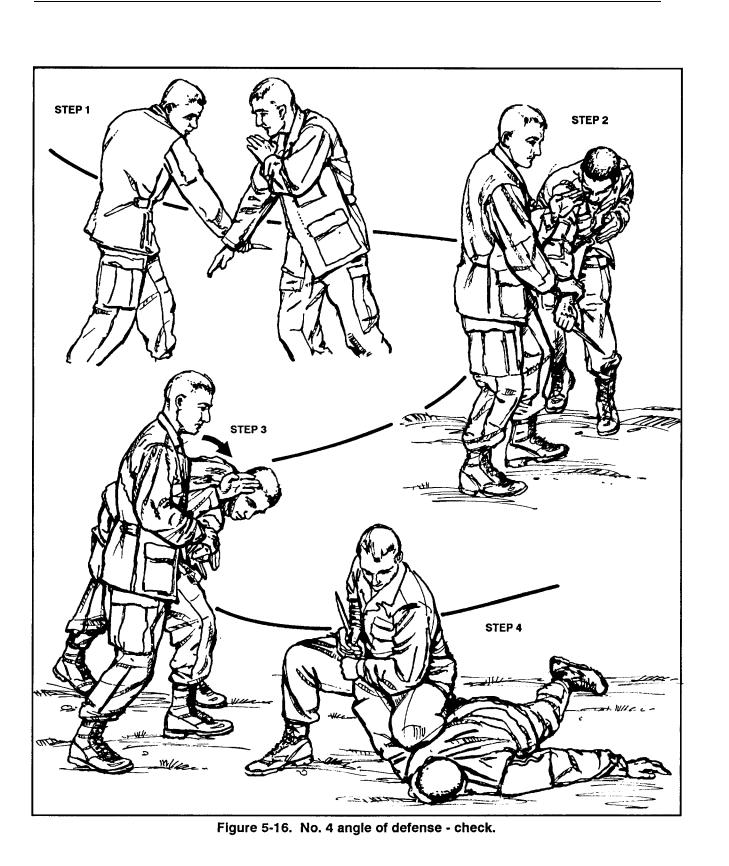
FM 21-150
5-25

FM 21-150
(5) Low No. 5 angle of defense–parry. A lunging thrust to the stomach is made by the attacker along the No. 5 angle of attack (Figure 5-17, Step 1).
The defender moves his body off the line of attack and deflects the attacking arm by parrying with his left hand (Figure 5-17, Step 2). He deflects the attacking hand toward his right side by redirecting it with his right hand.
As he does this, the defender can strike downward with the left forearm or the wrist onto the forearm or wrist of the attacker (Figure 5-17, Step 3).
The defender ends up in a position to lock the elbow of the attacking arm across his body if he steps off the line of attack properly (Figure 5-17, Step 4).
5-26
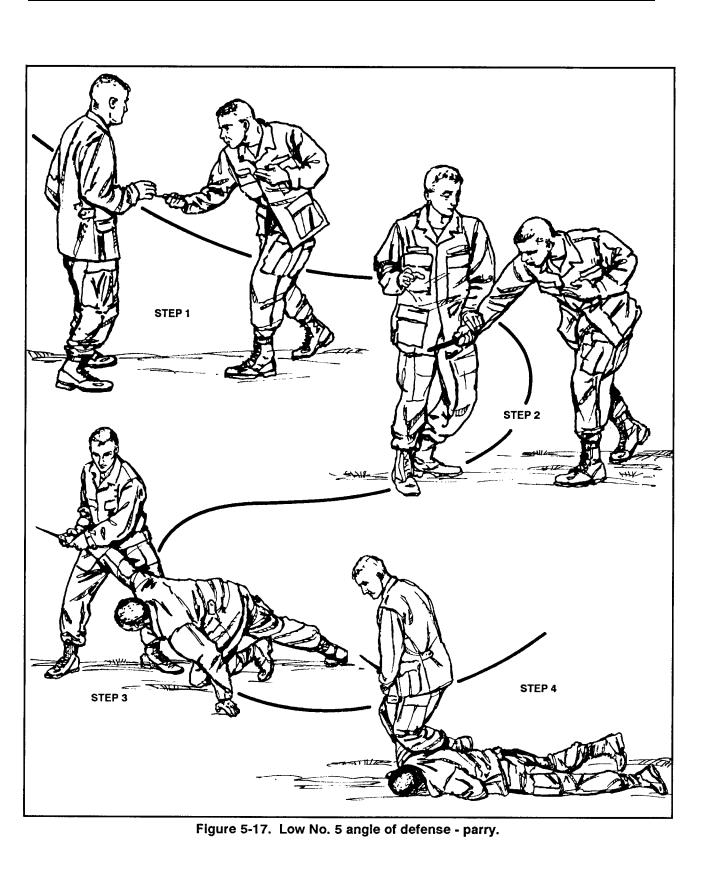
FM 21-150
5-27
